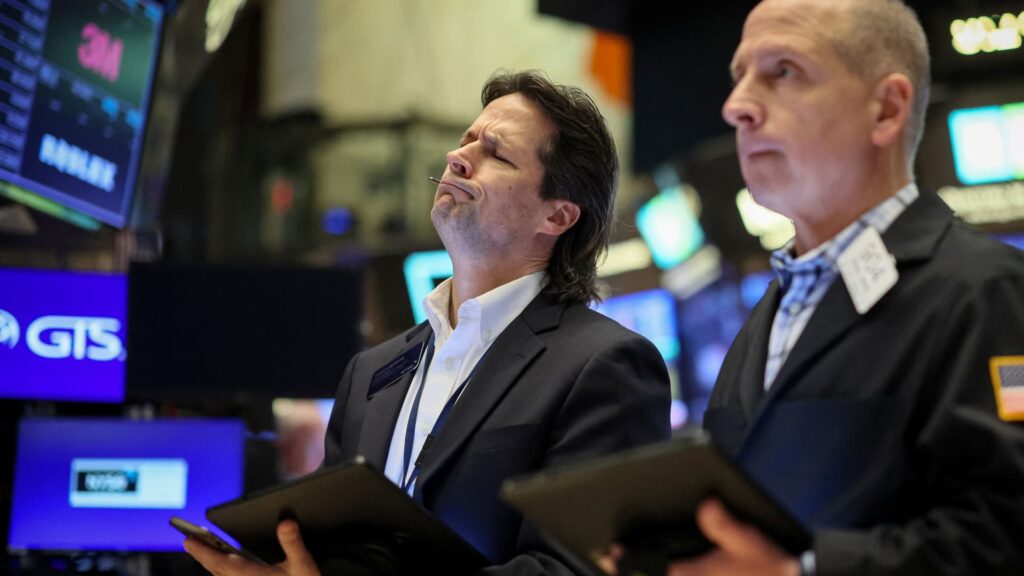
Bank stocks have been in comeback mode since making a key low post the regional bank crisis in 2023. Some have come all the way back (like JPMorgan), but most are still well off the highs from the last few years. A new breakout could be on the horizon, according to the charts. Let’s break it down. Two of the most popular bank ETFs are the SPDR S & P Regional Banking ETF (KRE) and the SPDR S & P Bank ETF (KBE) . While their charts are similar, they are not identical, which we’ll review in detail below. Under the surface, ETFs share some characteristics, but differ in various ways, too. This table compares the two ETFs. The cells highlighted in blue depict which ETF has the advantage within that particular category. Beyond both holding banks, here are the key similarities: Both own a lot of stocks. While they are in no way diversified given the niche part of the market they represent, none of their holdings has an outsized influence. Both are up considerably from the 2023 low. Believe it or not, KRE (+44%) and KBE (+51%) both have outperformed the S & P 500 (+38%) from their respective spring low points. Both are lagging the S & P 500 in 2024, which is +8.2% YTD. The noticeable differences are as follows: KRE is a lot more liquid. Its average daily volume is nearly 14 million shares vs. 2.5 million for KBE, according to ETFDB.com. The biggest difference is that KRE holds only regional banks. KBE holds both regionals and big, money center banks (along with a few from financial services and capital markets). Thus, KBE’s average market cap is nearly 8 times bigger than KRE’s. KBE owns the biggest bank of all – JPMorgan, which has market cap of half a trillion dollars. These factors all matter given that every investor has different needs. Bullish charts Now that we understand what’s behind both ETFs, let’s talk about the charts. The bottom line is that both KRE and KBE have been forming bullish patterns, and we could see breakout attempts soon. As noted above, the charts are not identical, but they do share one key trait. Both KBE and KRE have been consolidating their rising 200-day moving averages. KBE is testing its late 2023 highs and is close to breaking out from a six-month cup/handle pattern. The initial target would be up at $52. KRE still is visibly below its own December ’23 peak, but it’s close to breaking out of a bullish formation of its own. It’s small and the trading objective only is slightly above said December ’23 peak but seeing any upside target acquired is constructive. It simply keeps the comeback story alive. Zooming out over a three-year period, we see exactly how the aggregate comeback in banks has been playing out. While it’s been a volatile journey, both KBE and KRE have continued to make higher lows since last spring. KBE already has punctured a two-year downtrend line; KRE is testing its downtrend line again now. Of course, interest rates play a big role. Here is a chart with the 10-year yield, KBE and KRE. As is clear, both bank ETFs have done basically what most equity ETFs have done since late 2021 – rally after making key lows in fall ’22, spring ’23 and again in fall ’23. During most of that time, rates have been rising. Whether this helps banks outperform over the long term remains to be seen, but right now their charts point to their comeback stories continuing. -Frank Cappelleri Founder: https://cappthesis.com DISCLOSURES: (Owns JPMorgan.) THE ABOVE CONTENT IS SUBJECT TO OUR TERMS AND CONDITIONS AND PRIVACY POLICY . THIS CONTENT IS PROVIDED FOR INFORMATIONAL PURPOSES ONLY AND DOES NOT CONSITUTE FINANCIAL, INVESTMENT, TAX OR LEGAL ADVICE OR A RECOMMENDATION TO BUY ANY SECURITY OR OTHER FINANCIAL ASSET. THE CONTENT IS GENERAL IN NATURE AND DOES NOT REFLECT ANY INDIVIDUAL’S UNIQUE PERSONAL CIRCUMSTANCES. THE ABOVE CONTENT MIGHT NOT BE SUITABLE FOR YOUR PARTICULAR CIRCUMSTANCES. BEFORE MAKING ANY FINANCIAL DECISIONS, YOU SHOULD STRONGLY CONSIDER SEEKING ADVICE FROM YOUR OWN FINANCIAL OR INVESTMENT ADVISOR. Click here for the full disclaimer.






